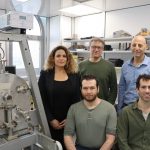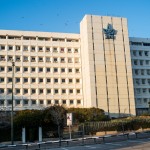Seasonal Fertility: Sunlight May Influence Women’s Reproductive Health, Study Finds
Jerusalem, 19 February, 2024 (TPS) -- Israeli scientists have discovered a potential link between exposure to the sun’s ultraviolet radiation and increased fertility in women, shedding light on seasonal fluctuations in certain hormones.
In a study published in the peer-reviewed journal, Steroids, researchers from Tel Aviv University and the Sheba Medical Center at Tel Hashomer examined how UV radiation affects the secretion of anti-Mullerian hormones (AMH) in the ovaries of women in the later years of their reproductive lives.
In females, AMH is produced by ovarian follicles, and its levels reflect the ovarian reserve, which refers to the number of eggs remaining in the ovaries. As women age and approach menopause, the ovarian reserve decreases, leading to a decline in AMH levels. Therefore, AMH levels are often used as a marker of ovarian function and fertility potential in women.
Led by Tel Aviv University Professor Carmit Levy, the team investigated how UV radiation affects AMH levels in women between the ages of 30-40.
“Based on our prior studies, we can affirm that sun exposure increases metabolism, sexual appetite and behavior, and, at least in animal models, enlarges the ovaries and extends the estrus period,” Levy explained.
The study analyzed data from 2,235 Israeli women, comparing their AMH levels with recorded UV radiation levels. While no significant correlation was found between UV exposure and AMH levels in younger women aged 20-29, a clear seasonal pattern emerged among older fertile women aged 30-40. These women, whose egg reserves are declining, exhibited higher AMH levels during the summer months when sun exposure is typically increased.
“Previous studies have shown that sun exposure can affect various physiological processes, including metabolism and reproductive behavior. While our findings suggest a potential association between sun exposure and increased fertility in women aged 30-40, further research is needed to establish a causal relationship and determine the optimal level of sun exposure for fertility benefits,” said Levy.
But she cautioned, “This is a preliminary, pioneering human epidemiological study, and we need to be cautious about inferring a causal relationship between fertility in women and exposure to UV radiation. Humans are not the same as mice. However, we are also animals, our hairless nature makes us even more sensitive to solar radiation. Our research suggests that the female reproductive system is indeed more fertile in the summer, but we still have no information on the mechanism or actual success rates.”
Dr. Ruth Percik, of the Sheba Medical Center added a note of caution to women considering spending more time in the sun. Excessive exposure to the sun’s UV radiation is associated with premature aging of the skin, suppression of the body’s immune system, and raises the risk of mutations leading to skin cancer.
“While our study provides valuable insights, it is essential for individuals to practice safe sun behaviors and consult healthcare professionals before making any significant changes to their lifestyle,” Percik said.







